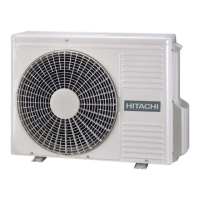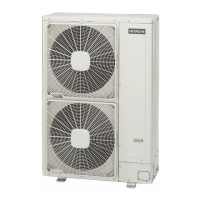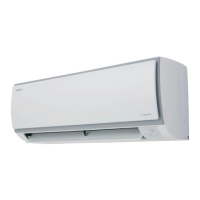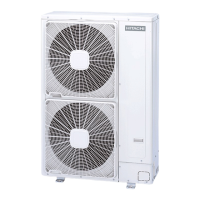A. Details for compressor terminals.
N O T E
• Do not expose the refrigerant cycle to the atmosphere for a long period in order to avoid water and foreign
particles entering into the refrigerant cycle. After removing the compressor, replace it quickly. If it is
exposed to the ambiance for a long period, seal both suction and discharge pipes.
• Remove the cap for the compressor just before replacing the compressor. Before assembling the
compressor, seal the suction pipe and discharge pipe with tape to protect the compressor interior from
foreign particles. Remove the tape when connecting the pipes.
D A N G E R
• All compressor pipes must be brazed to be connected to the refrigerant circuit. Ensure that all the
surrounding is free of flammable objects and liquids when performing piping brazing work.
6 Remove the suction pipe and the discharge pipe from the compressor. Isolate the wires and electrical components to
protect them from the burner flame when brazing the connection pipes.
7 Remove the two (2) nuts fixing the compressor and remove the compressor from the unit by lifting it. Slightly incline it
forward and lift.
8 For brazing the compressor connection pipes, first cool down the compressor piping side covering it with wet cloth. Then
brazing material will not enter into the compressor. If the brazing material enters the compressor, it will cause compressor
failures.
9 Reassemble the parts in the reverse order of the indicated removing procedures.
• Tighten the screws (U, V and W) for compressor wires with 2.5 Nm.
• Fix the lead wire firmly.
N O T E
• Fix the lead wire for the compressor firmly using a cable tie to avoid contacting the metal sheet sharp edges
and the high temperature piping.

